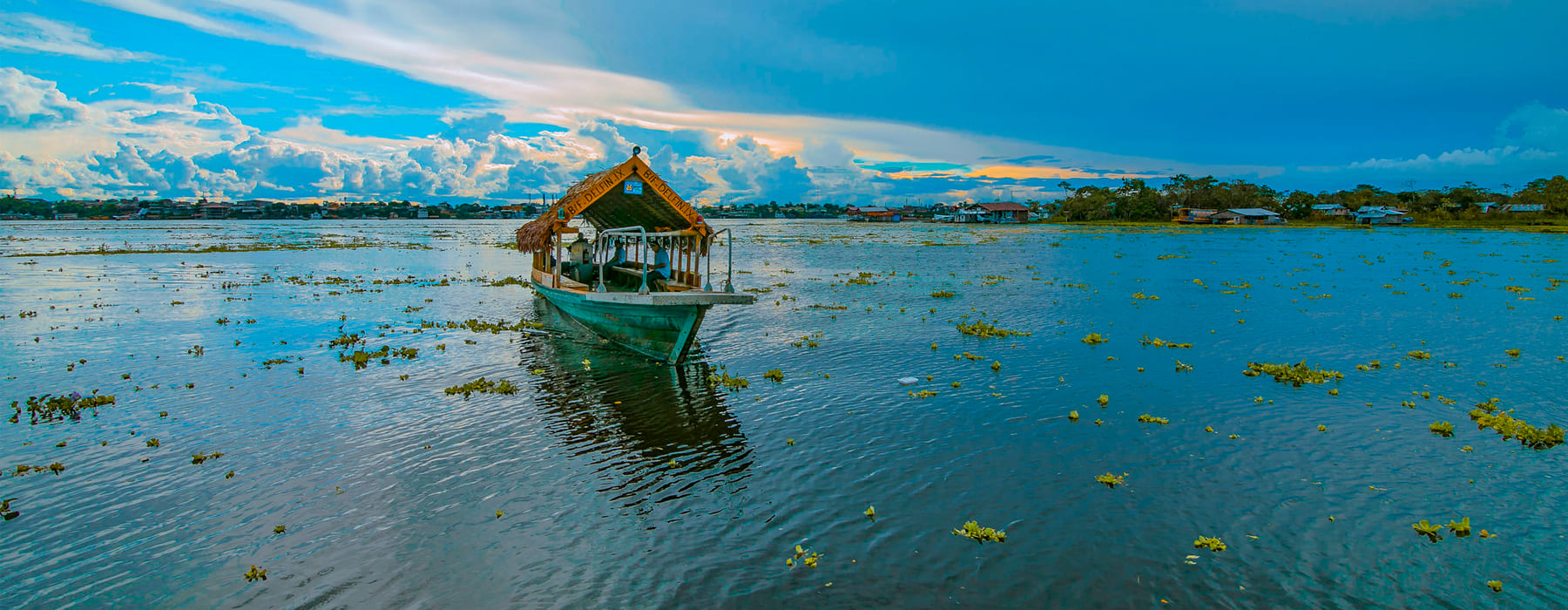
What to do in Iquitos Peru? Iquitos, affectionately known as the “Capital of the Peruvian Amazon” or “La Isla Bonita” (as it is surrounded by the Nanay, Itaya and Amazonas rivers) and is the largest city in the world, is a bustling jungle city to which It can only be accessed by air or water. The starting point for most travelers’ Amazon adventure cruises and jungle lodges, Iquitos is also a playground for independent explorers. Bordering the banks of the mighty Amazon River, Iquitos is in an incongruous state of deterioration and splendor.
The city prospered in the early 20th century as a major center of trade and rubber production, a legacy that resulted in architectural buildings ranging from opulent European houses to the tiny stilt houses of Bethlehem, while subsequent waves of boom and bust They have kept the economy afloat. What to do in Iquitos Peru? We can see a giant Bethlehem crafts market complete the cycle. The wild and strange festivals held in February and October go a long way to justifying Iquitos as a tourist destination in its own right.
Residents like to say that in Iquitos there are only two seasons: the rainy season and the very rainy season. The first is a relatively dry experience compared to the second, which is very humid. That said, actual temperatures and precipitation can be unpredictable from year to year. Sunny weather is possible even from November to July, and light, monsoon rains can occur at any time.
So what to do in Iquitos Peru? There are many things to see in Iquitos, with activities for all ages, interests and budgets. You can explore the city, its history and culture, try delicious food and also enjoy exploring the Amazon rainforest, its landscapes and getting to know its wildlife.

Iquitos is one of the main ports in the Amazon region with 400,000 inhabitants. It has always had an important place in Peru, even before the arrival of the Spanish. Thousands of years ago, it was inhabited by Amerindians, the original inhabitants of the Western Hemisphere. But when the Spanish arrived, the Napeano and Iquito indigenous groups lived in the area. Most groups were nomadic hunter-gatherers who followed rivers and lived in small seasonal settlements.
Iquitos was officially established around 1757 by Jesuit missionaries on the banks of the Nanay River. The Jesuits gathered the local indigenous people to live in this first Mission and called it San Pablo de Napeanos. For 130 years, Jesuit missionaries worked to convert indigenous people to Christianity and educate them. The various tribes were dedicated to working in agriculture and other manual labor around the settlement.
From the 18th century to the 19th century, the political situation in Iquitos was nothing short of chaotic. Peru was fighting for independence, but Iquitos was very isolated. After several years of struggles and debates, Peru managed to establish its northern borders with Colombia in 1922 and with Ecuador in 1942.
In the 20th century, Iquitos became the richest city in Peru thanks to the rubber boom when automobiles began to be mass produced. It attracted immigrants from all over the world, creating a conglomerate of ethnicities, languages and cultures. However, it also meant that several hundred indigenous groups were exploited and abused in their work. After 33 years, Asian rubber was discovered and began to be produced at a lower cost, marking the end of the boom.
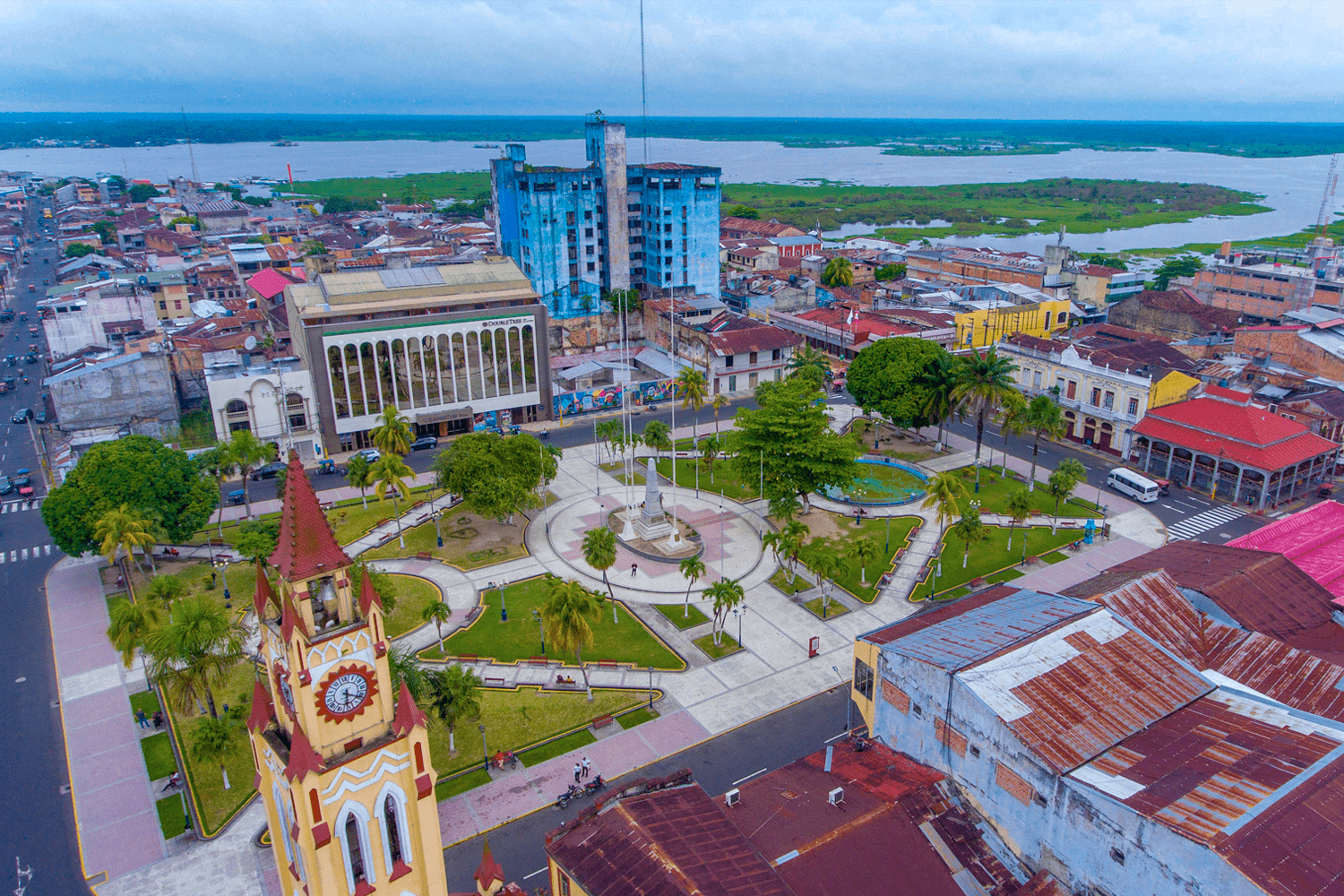
Iquitos is located in the northern Amazon basin of Peru. The city itself comprises nine districts: Iquitos, Belén, Punchana, San Juan Bautista, San Antonio, Moronacocha and Northeast and Southwest of Iquitos. The northeast and southwest of Iquitos are the newest areas of the city and are located on the opposite banks of the Itaya River, opposite Iquitos proper. When walking it is important to keep in mind that the Itaya River and the Nanay River are approximately the same size as the Itinez, but the Itaya is north of the Plaza. The Nanay joins the Amazon before the Itaya and is therefore a little more shaded.
Iquitos is the capital city of the Loreto Region in northern Peru and is located in the middle of the Amazon jungle surrounded by trees and its tributary, the Itaya River. No wonder it holds the unimaginable title of being the largest inland city in the world that can only be reached by boat or plane.
The best way to get to the most remote city in Peru is by flying. From Lima, the flight takes approximately 2 hours and 15 minutes.

An unfortunate disadvantage of being in the middle of the Amazon rainforest and having such close contact with incredibly endemic flora and fauna is surviving the humidity. Throughout the year, the average relative humidity does not fall below 70 degrees. Temperatures are fairly similar throughout the year, with an average minimum and maximum ranging between 22°C (71°F) and 31°C (88°F).
The summer rainy season runs from November to May, but even outside of these months periods of heavy rain are always possible.
However, an advantage of Iquitos? Its location is that its elevation of 106 meters (348 ft) above sea level offers tourists a respite from the many high-altitude Peruvian cities.
What is the best time to visit Iquitos?
The rainy season begins in the month of December and lasts until the month of March. The best time to travel to Iquitos is from April to October, when weather conditions are a little more stable and the chances of rain decrease. In any case, it must be taken into account that the average annual season is 28° and that humidity levels (even in the “dry” season are very high).
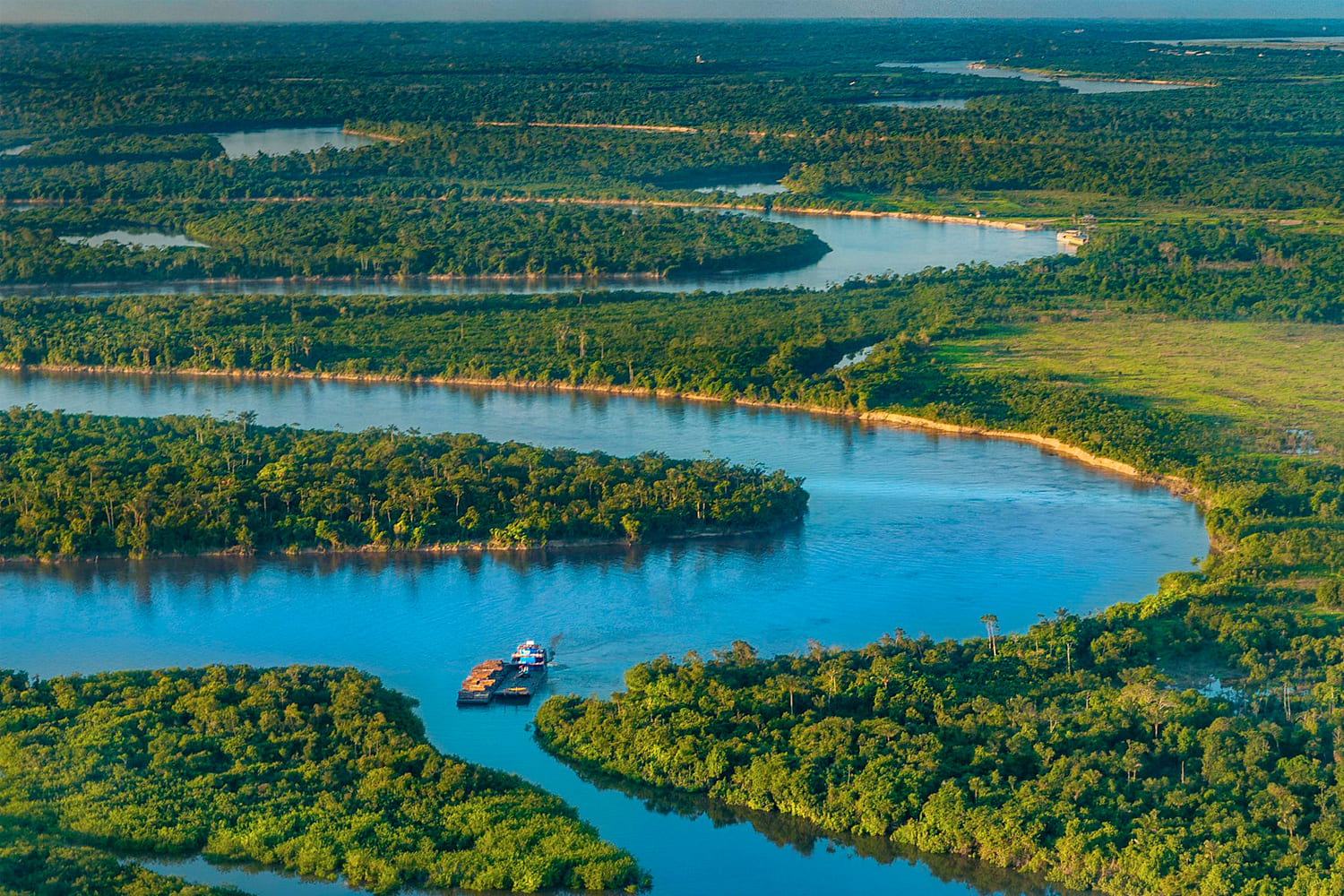
Despite being a small city, it has a large number of points of great tourist interest concentrated in those few streets, so I recommend a walk through its streets. On the tour you should not miss:
• Plaza Mayor or Plaza de Armas: It represents the heart of the city and in the center is the “Obelisk of Heroes” dedicated to those who fell in the Pacific War (armed conflict between Chile, Peru and Bolivia) and at its base you will find drawings forged in metal and one of the curiosities is that the artist confused “Chile” with “China” and to this day the reliefs show oriental men with their slanted eyes and typical clothing fighting against the Peruvians.
• Iquitos Cathedral: It is located in the Plaza de Armas and is a neo-Gothic style cathedral built between 1911 and 1924.
• Plaza 28 de Julio: It is the largest square in the city and is located at the southwest end of the center of Iquitos.
• Central Market: As in every Peruvian city, the central market is the axis of social life in the Amazonian capital and is the ideal place to have breakfast or lunch at a good price and abundant portions, as well as to find fresh fruits and vegetables or other products.
• Malecón Tarapacá or Boulevard: It is located one street from the Plaza de Armas, on the banks of the Itaya River, with an attractive panorama of the area and designed during the rubber boom in memory of the heroes who fell in the Pacific War. On your tour you will be able to observe important historical monuments, or enjoy restaurants, bars and cafes with varied menus and even salt-free options for those who are going to perform the Ayahuasca ritual.
• Casa Malecón Palace: This is the former Palace Hotel but it draws attention for its Art Nouveau design, with influences from the Catalan modernism of the Antoni Gaudí school. It dates from the beginning of the 20th century. Currently it can only be seen from the outside, during your walk along the Malecón.
• Belén Neighborhood and Market: The neighborhood is known among locals as “The Amazonian Venice” for being located on the bank of the Itaya River and is divided into Alto Belén and Bajo Belén and as tourist boat rides are offered along the Itaya Rivers. and Amazon. Belén also has a market that is gaining more and more followers among travelers, where you can walk along “Paquito” street, which is the “jungle pharmacy” where you can find concoctions to cure any ailment, from a headache to a bad stomach. loves. Additionally, in the market more than 150 native communities offer a wide variety of products, from clothing, food to technology. Since it is a neighborhood considered “dangerous”, it is recommended to go only during the day, especially between 8 in the morning and 12:30 noon.
• Puerto Buenavista Nanay: To the north of the city and on the Nanay River is this neighborhood of Nanay and its port. Most of the boats leave from here to access other points of tourist interest in the area such as Padrecocha, Pilpintuwasi or San Andrés. Additionally, in the neighborhood you can find a food market specializing in grilled fish.
• Iquitos Museum: The museum brings together a large number of photographic, historical, artistic and ethnographic materials from the city. On the first floor you will find the first 50 years of the history of the city of Iquitos, the existing biodiversity, the relationship between the river and the city of Iquitos, the rubber era as well as the exhibition of infographics and statistical data; and the second floor covers topics such as the decline of the rubber era, the exploitation of hydrocarbons and the transformation of the city together with historical data such as the presence of the Peruvian Navy in the conflicts with Colombia and Ecuador. Address: Jr. Yavarí block 12 s/n. Hours: Tuesday to Friday from 7am to 8pm, Saturdays from 8am to 5pm and Sundays from 9am to 3pm. Price: check prices.
• Ayapua Historic Ship: Built in Hamburg, Germany, in 1906, this historic ship currently located on the Itaya River does not contain a large number of pieces or artifacts inside but is itself a floating relic. It was used during the rubber boom to travel through the Peruvian Amazon to collect cacuho and transport it to the port to later be exported to the United States of America or Europe. In its 10 exhibition rooms you can see: books, maps, documents, military uniforms, telescopes, compasses, furniture and watches among other objects from the time.
• Museum of Amazonian Indigenous Cultures: One of the best ways to learn about the indigenous cultures of the Amazon, a brief visit to this museum shows how the Amazonian people and their culture interact with animals, plants, forests, rivers and lakes in which they live. You will find everything from feather arts, ceremonial objects, musical instruments, utensils used in hunting and fishing and much more. Address: Malecón Tarapacá 332 (on the riverside). Hours: Monday to Sunday from 8 a.m. to 7.30 p.m.
• Iron House: The Iron House is one of the greatest cultural icons of Iquitos, and one of the best preserved examples of civil architecture in Peru. It is said that its design was in charge of Gustave Eiffel (Yes, the same one as the Eiffel Tower in France). The structure was exhibited in Paris in 1889 and, a year later, it was moved and assembled in Iquitos.
Considered a Historical Cultural Heritage of the Nation, the Casa de Fierro stands out for its European-style design, with large windows, balconies and a pyramidal roof. On the second floor there is a Creole food restaurant, whose terrace offers a privileged view of the Plaza de Armas.

This center rescues baby manatees that have been captured for illegal marketing as pets, and at the center they try to rescue and rehabilitate them. They also rescue other species such as pink dolphins, anteaters and sloth bears, among others. When you go to the center you can observe and feed these beautiful animals.
It is located 11.5km from the center of Iquitos and you can get there by motorcycle taxi or public bus. Hours: Monday from 12pm to 3pm and Tuesday to Sunday from 9am to 3pm.
Pedrito Farm of Barrio Florido
On a visit to Fundo Pedrito you can walk through the paiche farm (the largest river fish in the Amazon), caimans and piranhas, as well as see other native animals. Hours: Monday to Sunday from 9am to 4pm. You can arrive by public boat from the Port of Nanay.
From this viewpoint you can observe the Amazon River, meet the Independencia community and visit the Lupuna tree (more than 200 years old) and the waterfall that are near the viewpoint.
You can get to the viewpoint from Iquitos with a public boat from the Port of Nanay. You can also go from Fundo Pedrito to the Mirador in a motorcycle taxi.
The community of Padre Cocha is located about 20 minutes from the town of Bellavista Nanay by motor boat, on the left bank of the Nanay River. In this place you can meet the Cocama Cocamilla ethnic group, which is a community of artisans who are mainly dedicated to pottery.
From this point you can access the Bora tribe and the Pilpintuwasi butterfly garden. You can get there with a public boat from the Port of Nanay. There are boats all day.
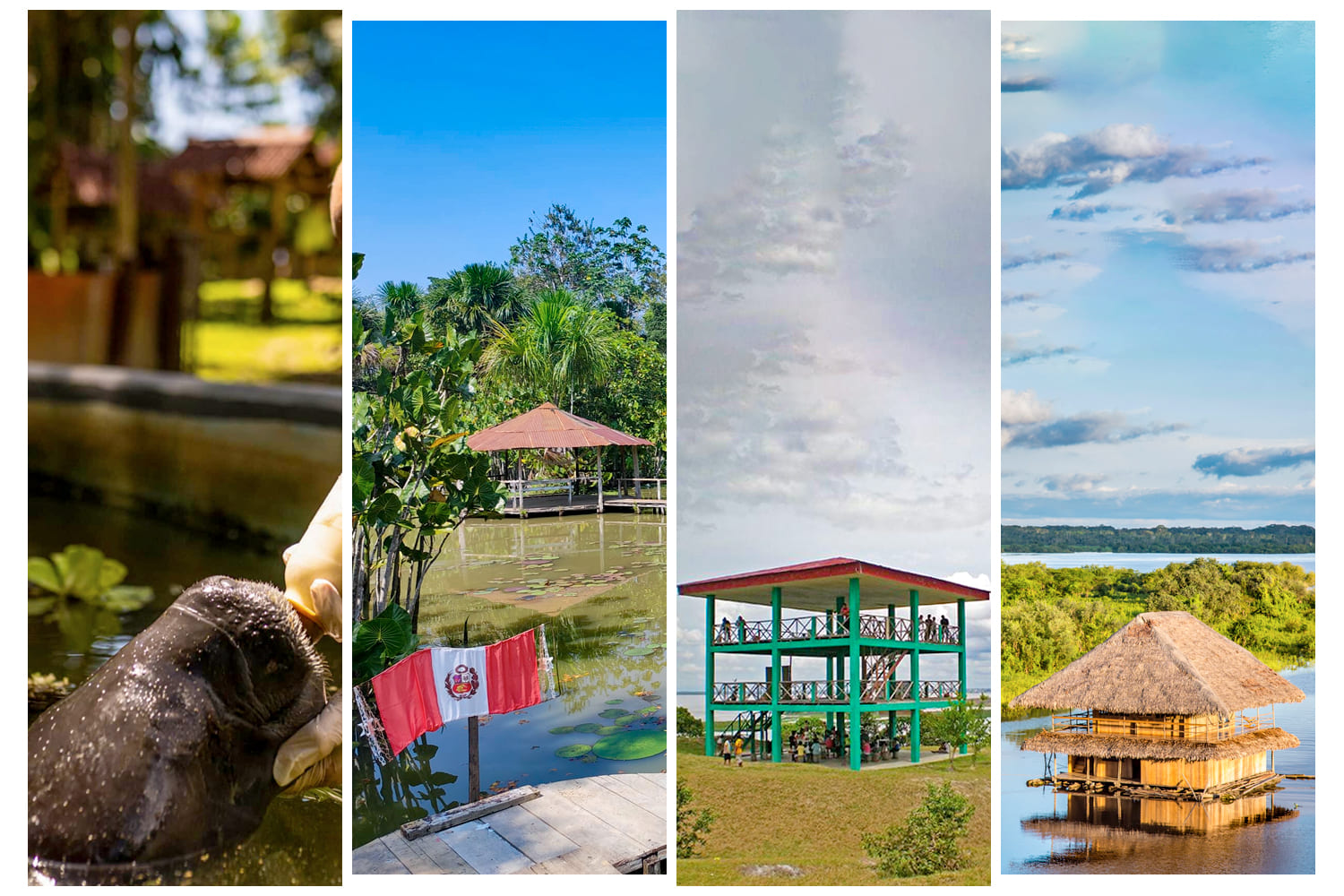
The Pilpintuwasi Butterfly Garden is home to a wide variety of butterfly species and also serves as a rescue center for many Amazonian wildlife species.
It is located on the Nanay River, near the community of Padre Cocha and takes about 20 minutes by boat from the port of Nanay. Hours: Tuesday to Sunday from 9am to 4pm. Guide hours: 9.30am, 11am, 12.30pm, 1.30pm and the last visit of the day is at 2.45pm).
You can get there by public boat (“collective boat”) from the Port of Nanay. There are boats all day. During the dry season, you have to walk 15 minutes through the community of Padre Cocha to reach the butterfly farm.
You can also take a “peque peque” (faster private boats) or, if you are in a hurry and have money, you can arrive on a “Slider”.
This recreational complex of more than 360 hectares of natural forest is located around the Quistococha lagoon. There we will find an artificial white sand beach where you can swim, take a ride around the lake in rowboats or enjoy the restaurants in the area. There is also a zoo and a botanical garden in the complex.
It is 30 minutes by motorcycle taxi from the center of Iquitos. Hours: Monday to Sunday from 7am to 5pm.
It is one of the oldest populated centers in the Peruvian Amazon, founded in 1830. Due to its strategic location as a connecting point for the Marañón and Ucayali rivers (you can see the meeting of the waters, where the line that the divide!) constitutes the main center of commercial exchange.
It has basic services to receive tourists and a viewpoint, Miguel Grau, 30 meters high from where the source of the Amazon River can be observed, with rest areas and sales of local crafts.
In Nauta you can also visit the Sapi Sapi lagoon and feed the paiches there or you can see the Charpa de Recomas Christ in the church or a visit to the Rosa Mística. You can get to Nauta from Iquitos by river or by land.
You can also go to Nauta and see the source of the Amazon River.
This island is part of the Amazonian paradise located on the banks of the Amazon River where primates from the Peruvian jungle are worked. In this place monkeys that have been victims of illegal trafficking, orphans, malnourished, sick, are rescued and given the necessary care and kept free. The objective of this project is to repopulate the jungle with different species according to their natural habitat.
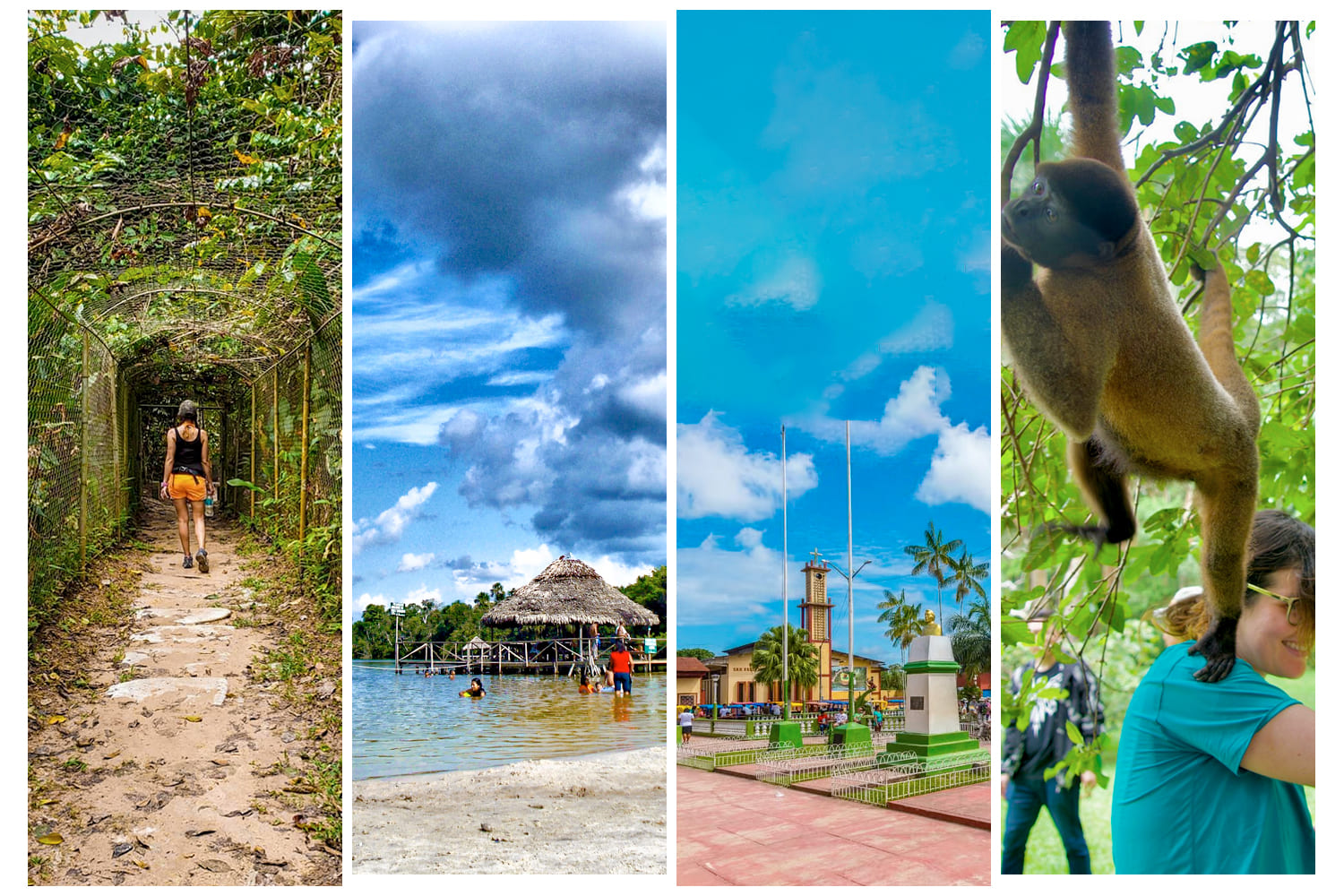
This reserve is also known as “the most extensive protected flood forest area in the Amazon” and includes a large part of the provinces of Loreto, Requena, Ucayali and Alto Amazonas and is limited by the Marañón River to the north and the Ucayali-Canal River. from Puinahua to the south. A great diversity of birds, mammals (including the pink dolphin), reptiles, amphibians, fish and wild and cultivated plants live in the reserve.
The Pacaya Samiria National Reserve is one of the ideal places to come into contact with the virgin and wild nature of the Amazon, unlike other visits that are sometimes offered in the Amazon where native animals are not seen in freedom due to the proximity to large cities. , which scares them away.
In the territories of the department of Loreto there are large areas of protected Amazon forests, ideal for observing Amazonian fauna and flora and contact with native communities. The protected natural areas are the Pacaya Samiria National Reserve, Allpahuayo Mishana National Reserve, Matsés National Reserve, Güeppi Reserved Zone, Pucacuro Reserved Zone, Santiago Comaina Reserved Zone, Sierra del Divisor Reserved Zone. Some of them have facilities for tourist visits, Pacaya Samiria and Allpahuayo Mishana being the most visited due to the richness of their fauna and flora, with a large number of endemic species and the scenic beauty of their landscapes.
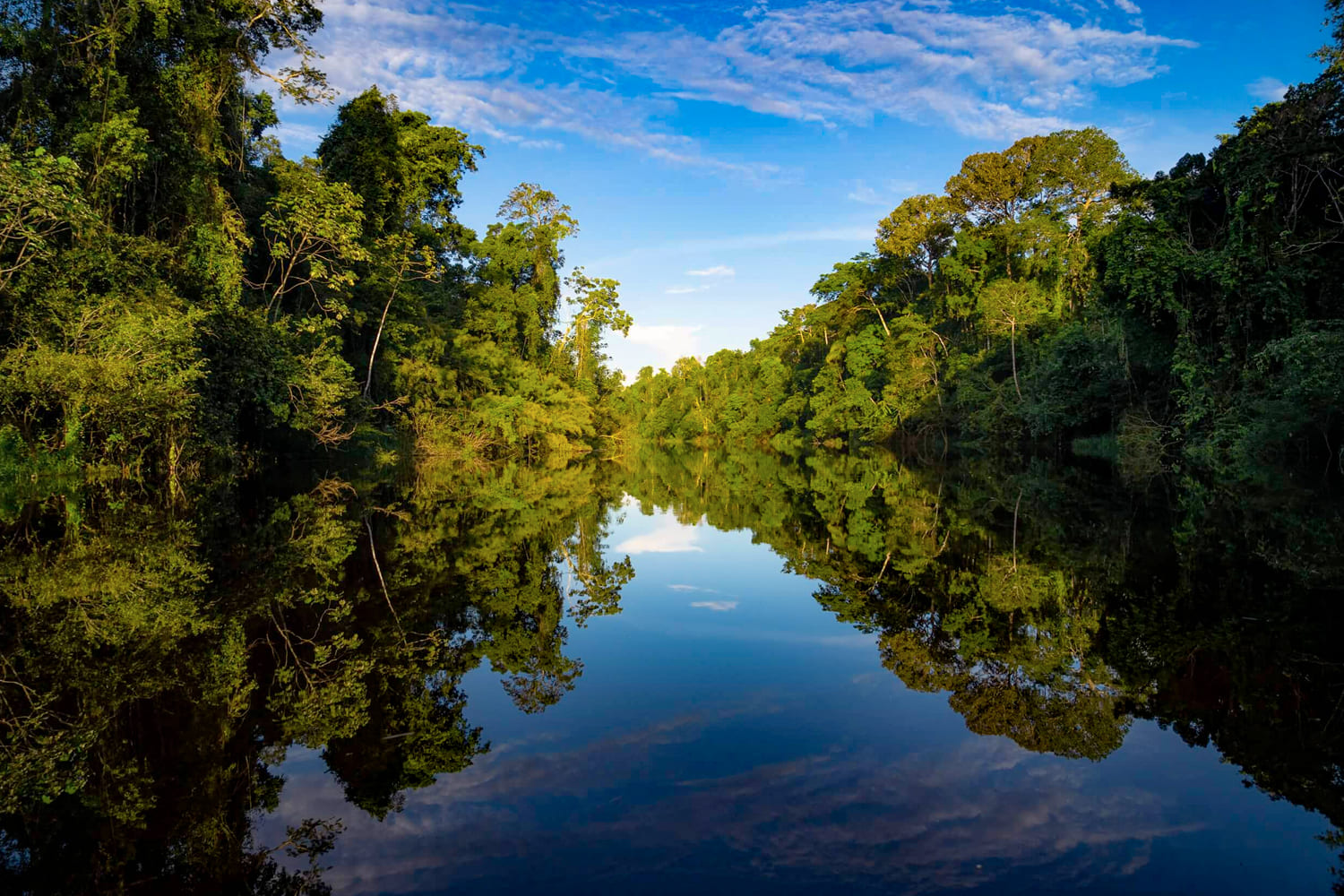
In the Peruvian Amazon there are 64 aboriginal tribes and sub-tribes registered and censused that preserve their language, rituals and ancestral customs. The best known, and who live near Iquitos, are the Boras and the Yaguas, who can be visited in their towns or settlements, also the opportunity to share their daily life with them, spending the night in their homes, doing experiential tourism.
The Amazon rainforest is the most extensive and varied natural reserve of life on Earth, abundant botanical and zoological species, in lush landscapes where you can enter for encounters with wildlife and nature. You can choose to stay in a jungle lodge and from there start your excursions, some very close to protected natural areas, highlighting the Pacaya Samiria National Reserve. Excellent option for bird watching, with a large number of endemic birds. Another option is navigation along the Amazon River and its tributaries, generating an incomparable experience, cruises with organized programs of 4 to 8 days, some departing from Iquitos and others from Nauta to navigate in the area of the Pacaya Samiria National Reserve. Visiting this area does not require yellow fever vaccination.
The Amazon River, the largest and longest in the world, receives water from thousands of rivers and forms the Amazon basin, which makes up one of the richest and most biodiverse ecosystems, the largest humid forest in the world. Discovered to the Western world by Francisco de Orellana in 1542. Declared as one of the 7 New Natural Wonders of the World. The city of Iquitos is the main starting point to explore the Amazon River and visit the protected natural areas or jungle lodges in Iquitos. In the Amazon of northern Peru, the basins of the Ucayali, Napo and Marañón rivers stand out, on whose banks are one of the main tourist areas. Some of these areas have been declared protected areas due to the richness of their biodiversity and protection of the native communities. The Amazon River is navigable throughout its entire length and flows into the Atlantic Ocean.
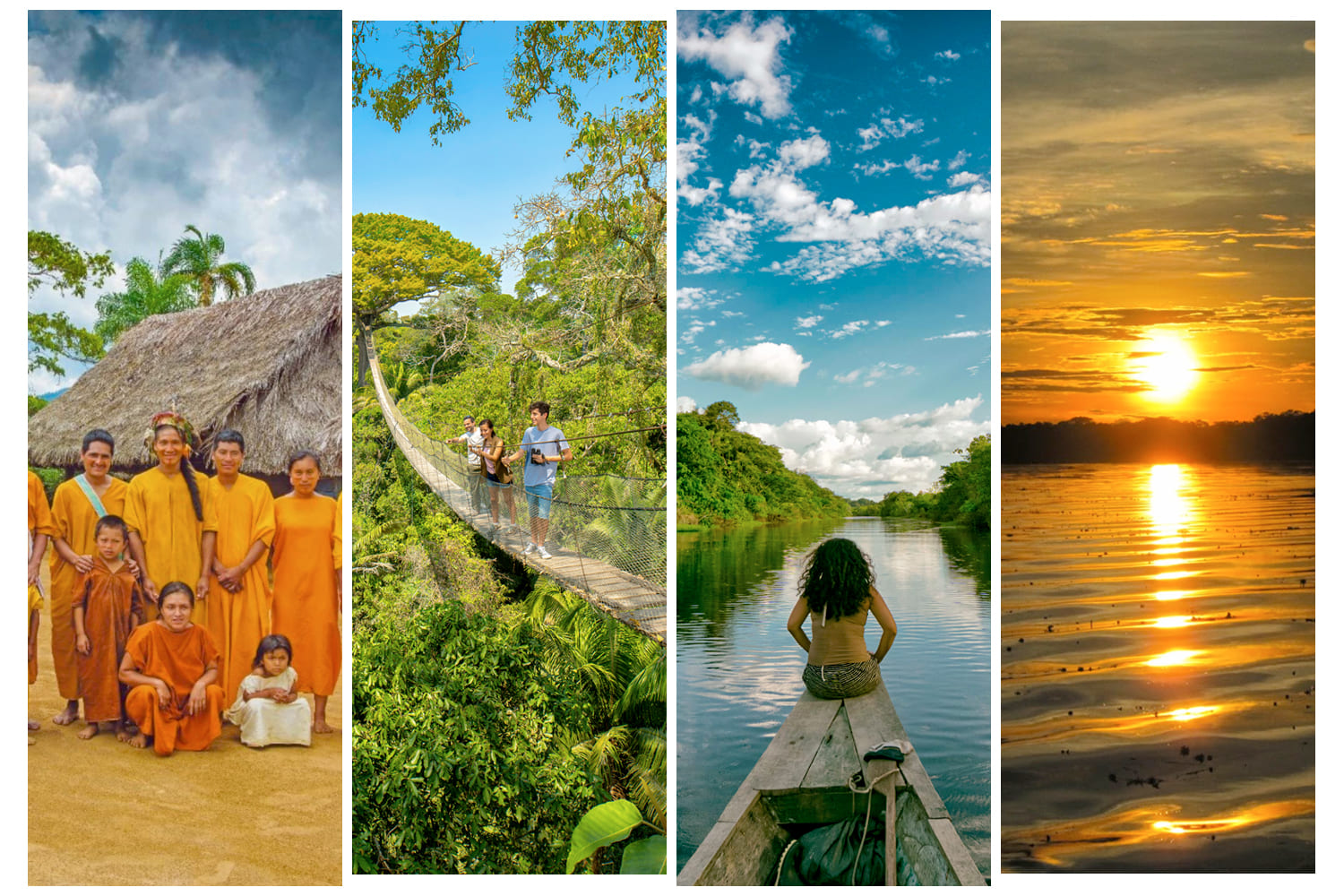
Traditionally, Iquitos brings together the culinary influences of the ethnic groups that emigrated there during the rubber boom in the 19th century. Many native ingredients of the Amazon appear largely in Iquiteños recipes; However, they are now prepared using European cooking techniques, with the addition of ingredients such as rice and noodles. It is said that up to 60% of Iquitos residents regularly mix Spanish, mestizo, indigenous and Creole food in their diet or when cooking. The cuisine is predominantly a mix of stews and rice dishes complemented by fish, chicken and various cuts of pork.
And then there is the fish. Being the seafood mecca commissioned by the Amazon and the main rivers that surround it, it is not surprising that these products always leave the table fresh and arrive at the celebration. Some of the traditional dishes you can find when visiting Iquitos include: Patarashca (fish, chicken or other protein marinated with herbs and then roasted on a palm leaf), Juane (rice with pieces of chicken and other meats, spices and eggs wrapped and cooked in a large Bijao leaf), Inchicapi (a soup with chicken and a spicy cinnamon flavor), Tacacho with Cecina (the perfect Christmas meal; Tacacho is a dish made with a doughnut-shaped banana mesh that It is cooked on the grill and cecina is a type of smoked ham slices). Native ingredients to look out for include Inchi (a nut that some say tastes like peanuts or oily watermelon) and especially Sacha Inchi fruits (also known as Inca peanuts). The pink, green or white part of a palm tree that is super juicy and very bitter. This native Amazonian potato, the yucca, is served in chips, mashed, and even in cookie form. Huito is also nicknamed jam balls, as it is used to add color and flavor to the super sweet fruit candies that are prepared when it is sugar cane season. An exotic and multicolored pumpkin. The famous camu camu berry that many know as the ace of super healthy superfoods. The food market when it comes to being the center of many local desert spots, including the world-class Kiki Infinity. Although not a native ingredient to Peru, leche de tigre is a beloved Peruvian ingredient worth mentioning. This liquid is often known as “tiger’s milk” and is a byproduct created when marinating fish meat or preparing our next dish, ceviche.
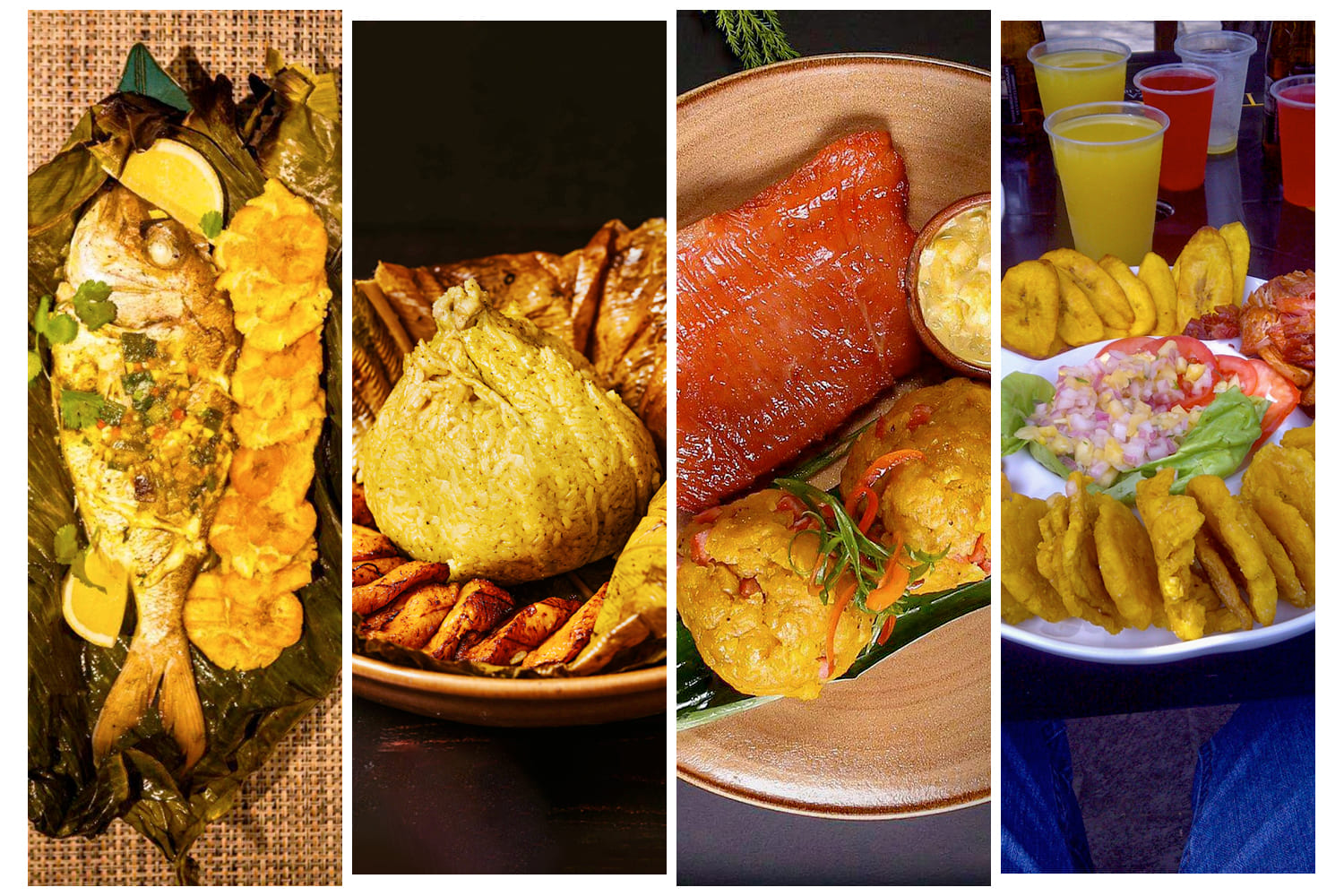
In addition to all the attractions already mentioned, other activities that you can do in Iquitos are: San Juan Artisanal Tourist Complex, Allpahuayo Mishana National Reserve. Hours: every day from 7am to 3pm), Tres Fronteras (border between Peru, Brazil and Colombia), Varadero de Mazán, the city of Fátima, Paradero Los Delfines, Lake Zungarococha or Playa Santa Clara.
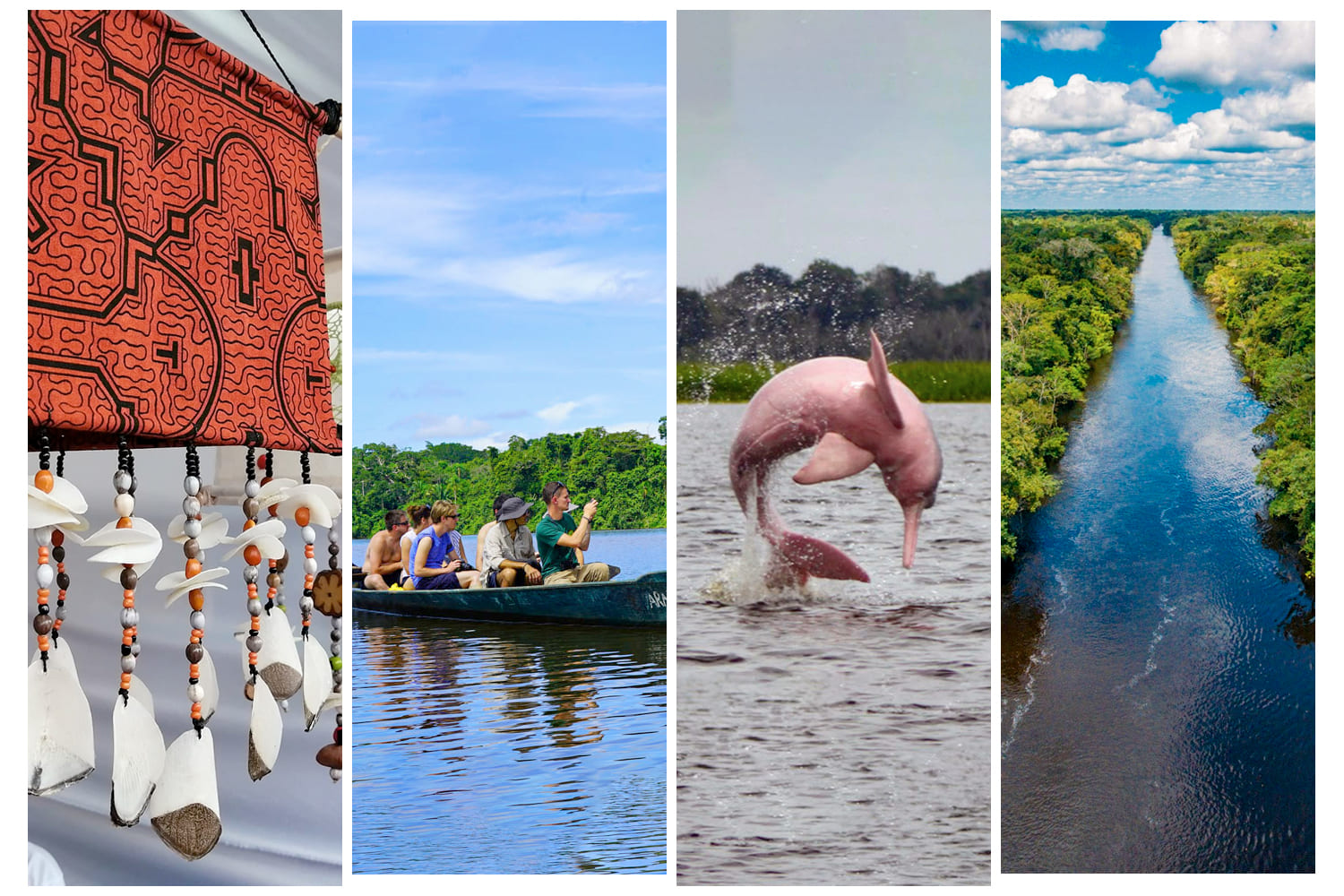
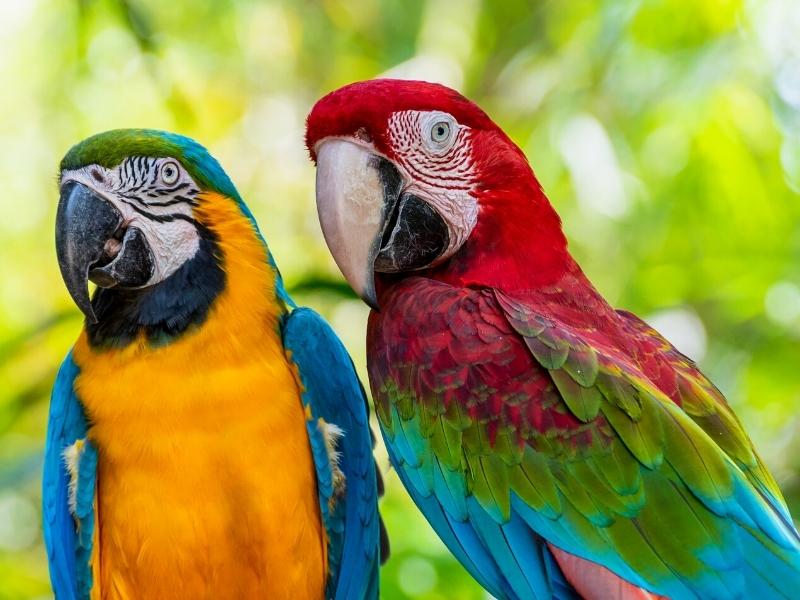
Visit the beautiful Amazon jungle of Tambopata in South America and enjoy the most impressive natural spectacle, we are referring to the blue and yellow macaw clay lick. Accompanied by the best local guides.

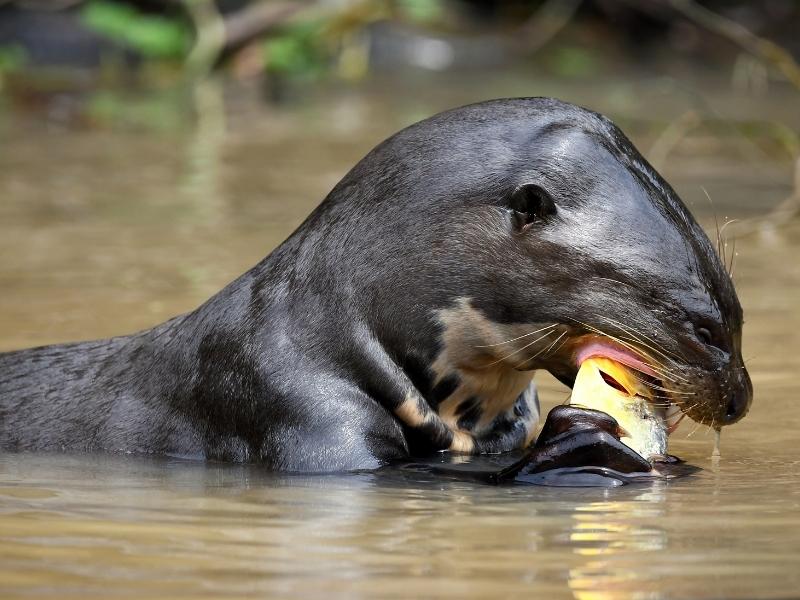
Discover the majestic Amazon rainforest of the Manu National Park. This protected area is in Peru, it is one of the largest ecosystems on the planet, due to its great diversity of birds, insects, plants and mammals.

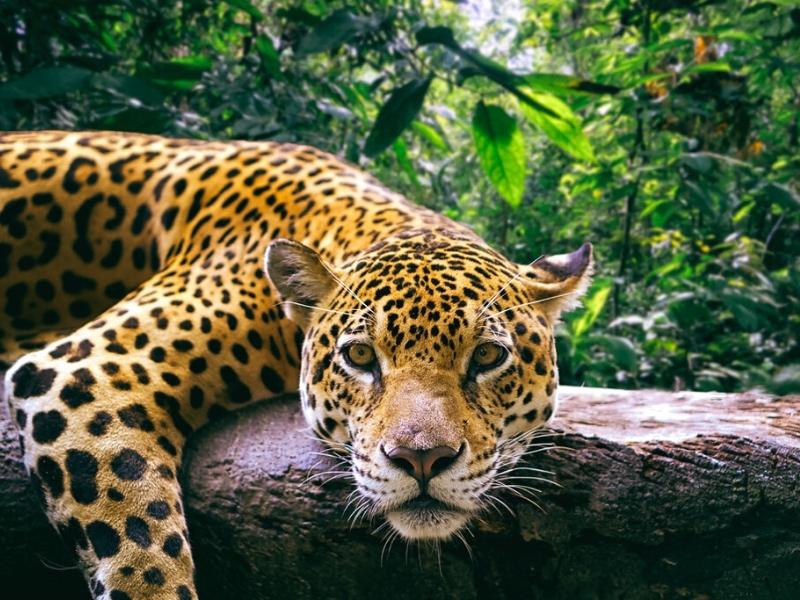
The Manu Jungle tour goes to one of the largest life biosphere reserves in the World. You will enjoy wildlife, traditional villages, with the best specialized guides.
